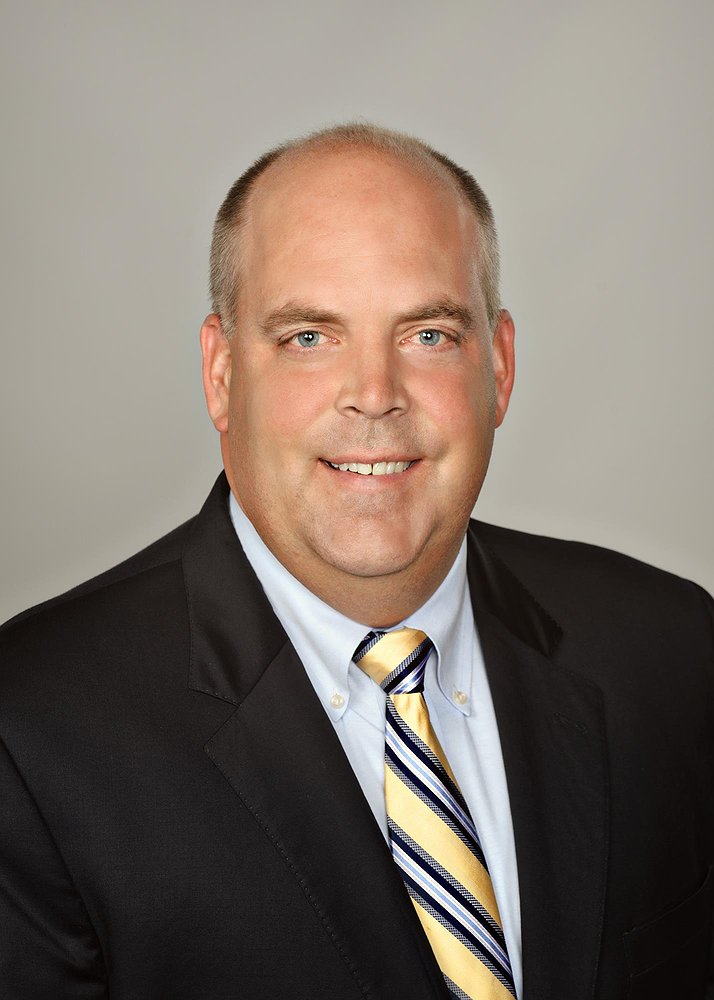THE FRONT ROW with MARK NELKE: Big Sky chatter, from the commish
Are you liking these “Big Sky After Dark” football games on the ESPN “family of networks?”
The second one this season just took place, UC Davis at Montana on Saturday night.
There might be more where those came from.
OK, maybe watching the Idaho Vandals get shellacked by Montana State a few weeks ago before a national audience on ESPN2 wasn’t so much fun.
But at least it was on a channel that was easy to find.
Sure, most Vandal games are available on ESPN+ — once you get past the aggravation of re-logging in all the time, like ESPN doesn’t know you’re a subscriber.
(Remember years ago, when the only way to watch Vandal games on TV was through the late Saturday night replays on KUID?)
Anyway, as part of the Big Sky Conference’s contract extension with ESPN through 2030, Friday night football games will be part of the package, beginning next year — good for the conference, bad for those who like to go to high school football games on Friday nights.
“We’re not going to discuss financials of the agreement, but they give us a very nice increase in the dollars,” Big Sky commissioner Tom Wistrcill said at the Big Sky Football Kickoff this summer in Airway Heights. “And our schools have done a great job embracing ESPN, and the production part, making every game look like a high-quality TV production and that’s been wonderful. And we’ve shown them we can draw quite an audience, whether it’s part of our ESPN+ package, or it’s late-night, Saturday night football. We’re also going to dabble in some Friday night games for football, starting in 2025, but that just provides incredible exposure for our teams. Again, 8 p.m. (kickoffs) here might sound late, but for everybody on the east coast and Midwest that’s home or at the bar, whatever, they’re watching football ... they’re going to watch Big Sky football. And that’s exciting for us.”
WISTRCILL TOUCHED on some other topics during that media gathering at the Northern Quest Resort and Casino, including:
MOVING THE FCS CHAMPIONSHIP GAME TO MONDAY NIGHT
In recent years, the title game was on a Sunday afternoon, and while it was on ABC, it also ran up against the final week of the NFL regular season.
“We worked hard on getting that game moved, away from the NFL,” Wistrcill said. “There were a lot of us that were pushing hard for Friday night for years, in that same weekend. Then all of a sudden the (College Football Playoff) went to Friday/Saturday (that weekend), so then it was like, ‘OK ... we’re very fortunate.’
“As soon as they went to 12 teams in the tournament, they had to move their tournament back a week, so that opened up that Monday night. So, now, for the next five years, we’re set for that Monday night, which was the CFP championship game, will now be the FCS championship game.
“For us to be the only football game on in the world that night, that’s a really big deal. We’ve been working really hard to push that, and the timing worked out. ESPN has noticed that that game draws an audience, so they were excited to do it as well. It’s a really good thing for us.”
SEEDING THE TOP 16 TEAMS IN THE FCS PLAYOFFS, RATHER THAN JUST THE TOP 8
In 2021, Eastern Washington beat Northern Iowa at home in the first round of the 24-team playoffs. The Eagles’ reward — a trip to Missoula to face conference foe Montana in the second round.
“I think that’s a wonderful thing for the Big Sky,” Wistrcill said of seeding the top 16. “Seeding 16 teams is going to help us where we won’t have matchups like last year, where North Dakota State played Montana State in the second round. Quite frankly, you had two of the six best teams in the country, one of them isn’t getting very far. It spreads out the strength around the country, and that’s going to help us get more home games, win more games, and get our teams deeper into the tournament.
“About four or five of us have worked really hard over the last few years to get that done. It doesn’t eliminate the regionality issues, but it certainly weakens them. I think that’s a great opportunity for our teams.”
CONCERNS WHETHER CONFERENCE REALIGNMENT WILL TRICKLE DOWN TO THE BIG SKY
Montana and Montana State, as well as South Dakota State and North Dakota State — four of the top football programs in the FCS — have been reported as potential additions to the Mountain West Conference, which is losing five of its members to the Pac-12.2 in 2026.
“You can never predict the future,” Wistrcill said. “We talk about expansion at every presidents’ meeting — should we really be looking hard at making some changes? And are schools interested in that as well?
“And my role is to make sure they all know what they would be getting into. I know what like is like in the G5 (Group of 5); I was an AD at that level (University of Akron) for six years, and the financial challenges have gotten more difficult for those G5 schools. If somebody’s going to make the move from FCS to FBS, they’ve got to pay $5 million, right up front. Just to do it. Then they’ve probably got to invest anywhere from $8 to $10 million per year, to be at that level, at the average level of say, the Mountain West.
“For our schools, that extra $8 to $10 million, I don’t know where they get that from. I don’t think the states are going to give them that money, and I think our schools do a really good job of maximizing their season ticket base, donations ... so, moving up would be a real challenge for our schools. It doesn’t mean someday, some of them might aspire to be that. “My job is to educate them on the pros and cons on being FBS vs. FCS. And you see where it goes. My crystal ball is not really clear on where this goes, and what this looks like in five years, but I do know that we’ve got a really good home for our programs, and there’s a lot of schools out there across the country that look like ours.”
HOW THE $2.8 BILLION HOUSE VS. NCAA AGREEMENT AFFECTS BIG SKY SCHOOLS
The agreement, in part, pays former athletes for what they would have received through Name, Image and Likeness, had that been a thing when they were in school.
“There’s two parts to the House settlement,” Wistrcill said. “There’s back damages, paid to the student-athletes, and the money forward, that the Power-4 will pay to the student-athletes.
“When they did the back damages, they essentially assigned those to all 360 (NCAA Division I) schools. So, I get it that we should all feel the pain. Unfortunately, what I don’t like is that money that’s being taken from the Big Sky which, on average, will be around $180,000-$350,000 per year for the next 10 years. That’s the penalty our schools have to pay, and those dollars will go to the settlement, and that money goes to former Power-5 football and basketball players.
“I used the line that Weber State’s money is going to go into Joe Burrow and Zion Williamson’s pocket. Because that’s exactly what’s going to happen. And we didn’t have any say in this; we were just pulled along by the NCAA. And they made a decision — here's how we’re paying the damages. Our schools all learned (in the summer), when their budgets are all booked for the next year, that now, here’s this penalty. So it’s really unfair. And again, there’s not much we can do about it, but it’s just kinda disappointing that none of our student-athletes are going to get this money. And yet we’re all being taxed for it.”
How much will the settlement hurt each Big Sky school?
"Depends on their budget, it can hurt a lot,” Wistrcill said. “People are having to make very difficult decisions about where to take that money from. It’s not like schools are just going to give money over the athletic department. They’re having to make difficult decisions about travel, about staffing. At this point I don’t think any of our schools are going to have to drop a sport. But I can tell you, that’s been discussed. Because, all of a sudden, if you have a $17 million budget, and all of a sudden you’re out $300,000, that’s a heavy penalty.”
Mark Nelke is sports editor of The Press. He can be reached at 208-664-8176, Ext. 2019, or via email at mnelke@cdapress.com. Follow him on X (formerly Twitter) @CdAPressSports.



